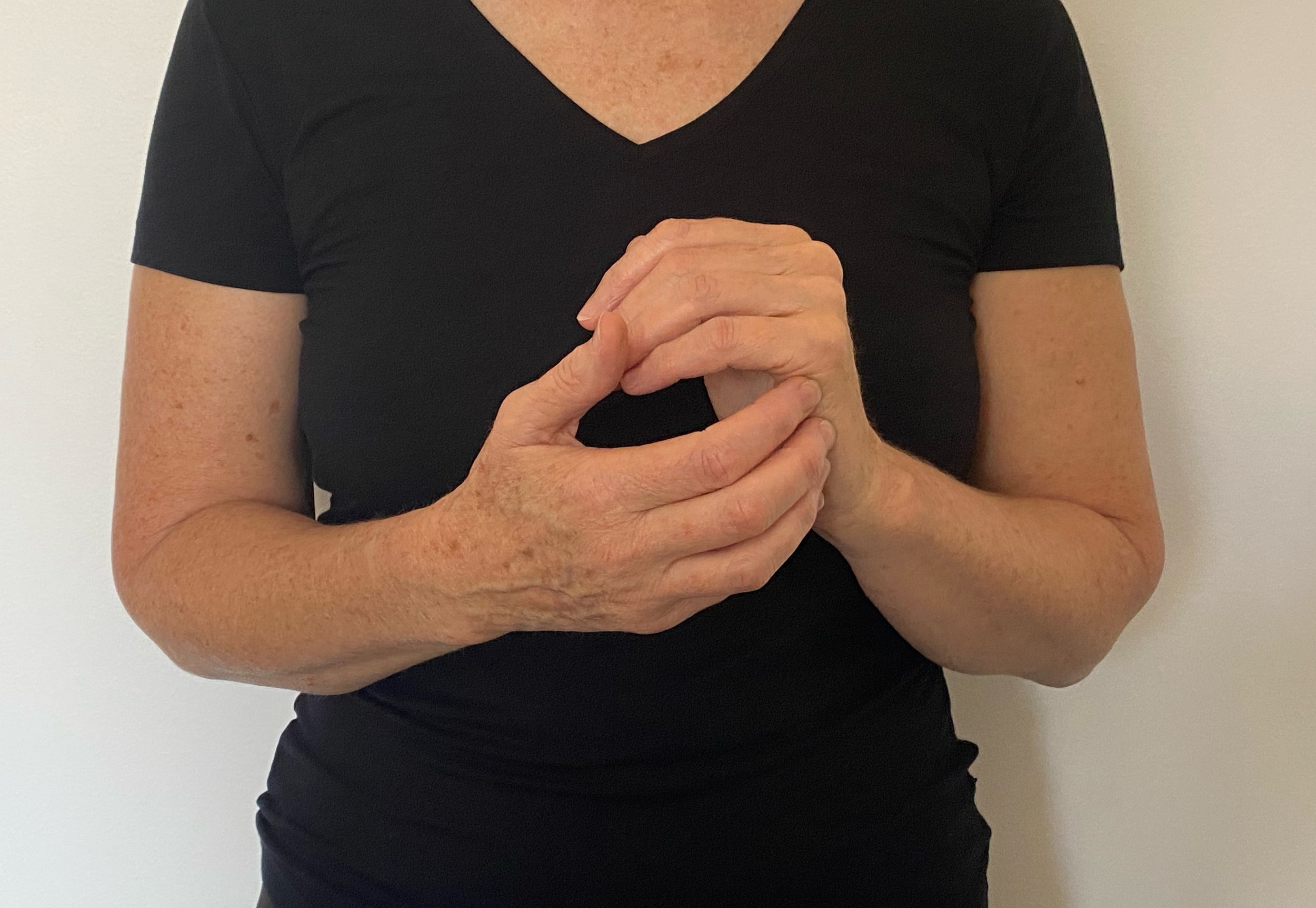Tapping: A Powerful Tool
About Tapping: A Powerful Tool for Stress Relief and Emotional Balance
Have you ever had a single thought or belief shift your entire experience in an instant? It can happen so quickly that you might not even notice it. The power of our minds is extraordinary, and neuroscientists estimate that 95% of our lives are determined by the subconscious mind. This means that much of our behaviour—everything from our habits, emotions, and personality to our cognitive biases, long-term memory, and body functions—is shaped by the subconscious.
Interestingly, the subconscious mind has the ability to "hijack" our emotions and body, triggering what’s known as the stress response. Understanding this response is key to transforming beliefs and improving our emotional health.
Understanding the Stress Response
The stress response—also called the fight-or-flight response—consists of a series of physical and mental reactions that help the body deal with dangerous situations. When we perceive a threat (real or imagined), our brain reacts by triggering the hypothalamus gland, which then activates the stress response. This leads to the release of stress hormones like adrenaline and cortisol, which cause physiological changes such as:
Increased heart rate
Elevated blood pressure
Muscle tension
Heightened alertness
Increased glucose in the bloodstream
While this response is beneficial in short-term danger, it can also be triggered by thoughts of past or future events, leading to chronic stress. Over time, the brain becomes more attuned to negative outcomes, which can lead to heightened anxiety and other emotional challenges. This is why human beings are more likely to focus on negative experiences rather than positive ones.
What Is Tapping?
EFT tapping is a self-help technique that involves tapping on specific points on the body to relieve stress and negative emotions. The idea is that by tapping on these points, you can restore balance to your energy system, which can become disrupted by pain and negative thoughts or emotions. Tapping may help reduce the effects of the stress response on your biological body, while also altering neural pathways to help you develop healthier perceptions of the world.
Dr Peta Stapleton, a leading researcher and author on EFT, has shown that tapping can be effective for a wide range of issues, including anxiety, weight challenges, depression, trauma, and more. You can explore her work in her book The Science Behind Tapping (learn more on her website at Peta Stapleton).
The Power of Reframing Negative Thoughts
To understand how we can change this, it helps to look at what researchers call “paper tiger paranoia”—a term used to describe when people perceive threats as more significant than they are. We often focus on negative outcomes, thinking they are more likely than they actually are. For example, Nobel laureate Daniel Kahneman's work on prospect theory reveals that people are more motivated to avoid losses than to seek gains, even when the losses are unlikely. This natural tendency can keep us stuck in cycles of stress and anxiety.
But what if we could reframe those thoughts and reduce their power over us? Enter Emotional Freedom Technique (EFT) tapping, a tool that can help retrain the brain and restore balance to the body’s energy system.
Why Tap on Negative Thoughts?
You might wonder why we tap on negative thoughts at all. The reason is simple: our brains naturally gravitate toward the negative. Whether we’re aware of it or not, negative thoughts are often at the forefront of our minds. By focusing on the reality of the present moment—the negative thought or stress response—you allow your brain to process and release it. This act of accepting and acknowledging our negative thoughts or emotions creates space for reframing and clearing.
Tapping works similarly to acupressure. By gently tapping on specific points, you stimulate nerves that can help reduce pain and stress, lower the cortisol levels in the body, and increase the release of endorphins—chemicals that boost mood and promote relaxation.
Adding Positive Tapping
Once your intensity drops below a 5, you can begin incorporating positive affirmations, such as:
“I am confident and capable.”
“I am at peace with myself.”
“I am relaxed and calm.”
“I am enough.”
Only use affirmations that feel true to you; if you resist them, return your focus to your true emotions.
How to Tap: A Step-by-Step Guide
If you're new to tapping, here’s how you can start:
Identify the Symptom:
Start by identifying what’s bothering you most. Is there an event, relationship, or physical symptom causing distress?Has this issue affected your confidence, thoughts, body image, or relationships?
Pinpoint the Emotion:
What are you feeling? How deeply are you feeling it. Common emotions may include fear, anger, sadness, frustration, envy, jealousy or anxiety.Identify the Belief:
Is there a belief attached to this emotion? Often, our beliefs are generalized judgments about ourselves and can be based on negative experiences (e.g., “I’m not good enough,” “I can’t control my emotions,” “I don’t have time,” “I have tried everything,” “Nothing works for me”).Write It Down:
Writing your thoughts can make it easier to form your setup statement—a declaration that acknowledges your feelings while promoting self-acceptance.Rate the Intensity:
Rate your emotional or physical intensity on a scale from 0 (least distressed) to 10 (most distressed).Create Your Setup Statement:
A simple setup statement could be: “Even though (insert issue), I deeply and completely accept myself.”Example: “Even though I am angry at myself for not speaking up, I deeply and completely accept myself.” or
“Even though I have a headache, and I can’t focus, I deeply and completely accept myself.” or
“Even though I am struggling with work deadlines, I deeply and completely accept myself.”
Show Yourself Compassion:
The phrase “I deeply and completely accept myself” is about showing compassion toward yourself. Even if the issue feels challenging, this acceptance can help release its hold on you, facilitating a shift in your emotional and physical state.Start Tapping:
Tap on the side of your hand (#1 in the picture) while repeating your setup statement three times.Tap Through Other Points:
Tap through the following points in sequence (#2 – #9):Eyebrow
Side of the Eye
Under the Eye
Under the Nose
Chin
Collarbone
Under the Arm
Top of the Head
As you tap, continue thinking about your emotions, or verbalize your thoughts related to the issue. Short statements such as “I can’t focus,” “I don’t speak up,” “My head is so sore,” “I am struggling at work” etc.Take a Breather:
After a few rounds of tapping, stop and take a deep breath.
Re-rate your intensity on the 0–10 scale and repeat until you feel the relief you need.
The Relaxation Response
Remember, tapping signals to your brain that it’s safe to relax. When you can relax while acknowledging a negative thought, it becomes easier to process that emotion, shift your mindset, and adopt more positive beliefs. The more you practice, the easier it becomes to replace stress and negative emotions with feelings of calm and self-acceptance.
Enjoy the Journey
Tapping can be a transformative practice for relieving stress, reframing negative beliefs, and restoring emotional balance. Whether you use it for daily stress relief or to address deeper emotional challenges, tapping can bring relaxation, self-compassion, and peace to your life.
Contact me for personalised tapping sessions, by clicking on the buttons below.
Start tapping today and experience the benefits for yourself!
I have included a couple of links here if you are interested in more ‘Science Behind Tapping’.
https://www.evidencebasedeft.com/the-science-of-tapping
https://www.youtube.com/watch?v=9aZ1Vh9STY8
Tapping Demo




